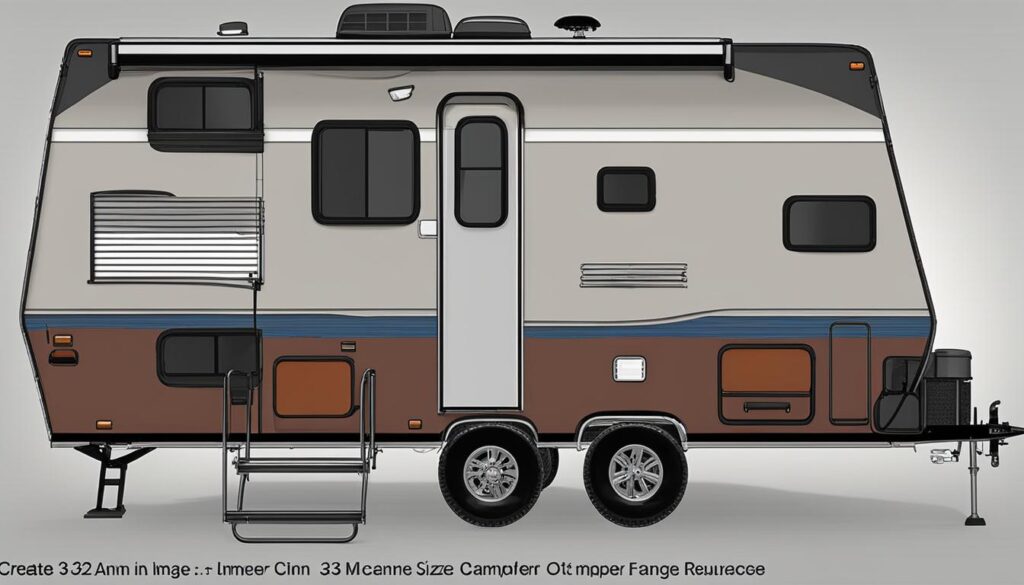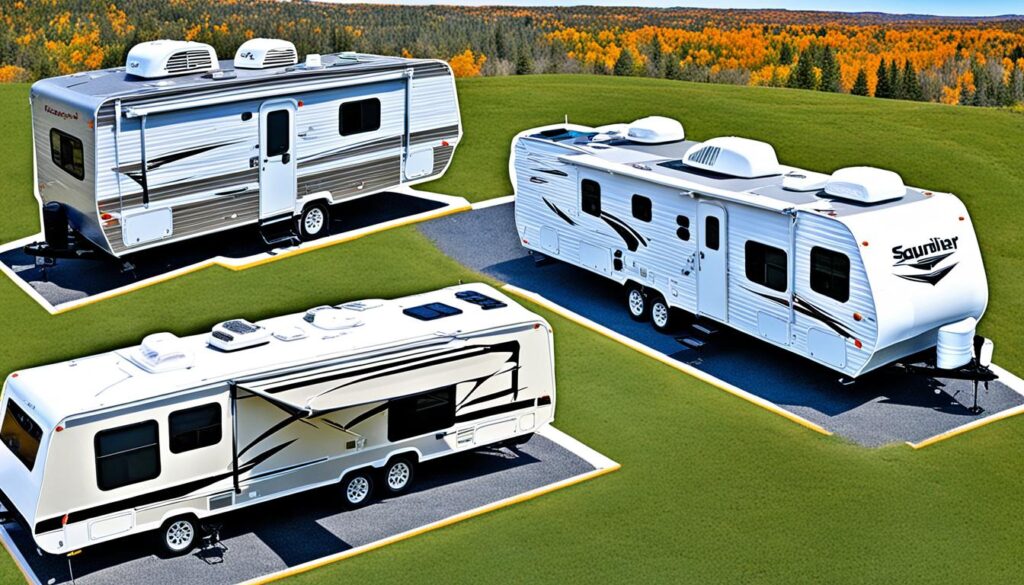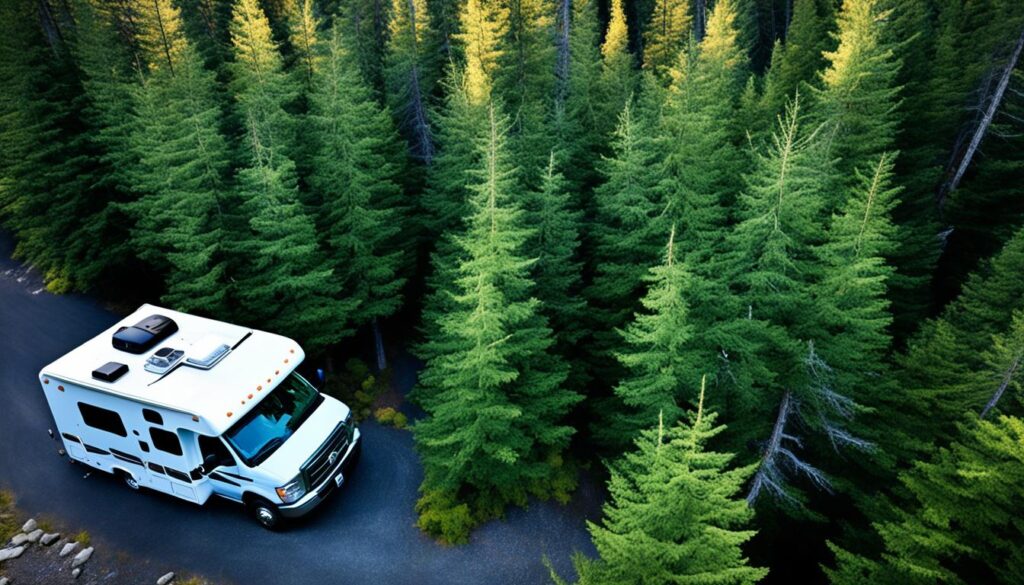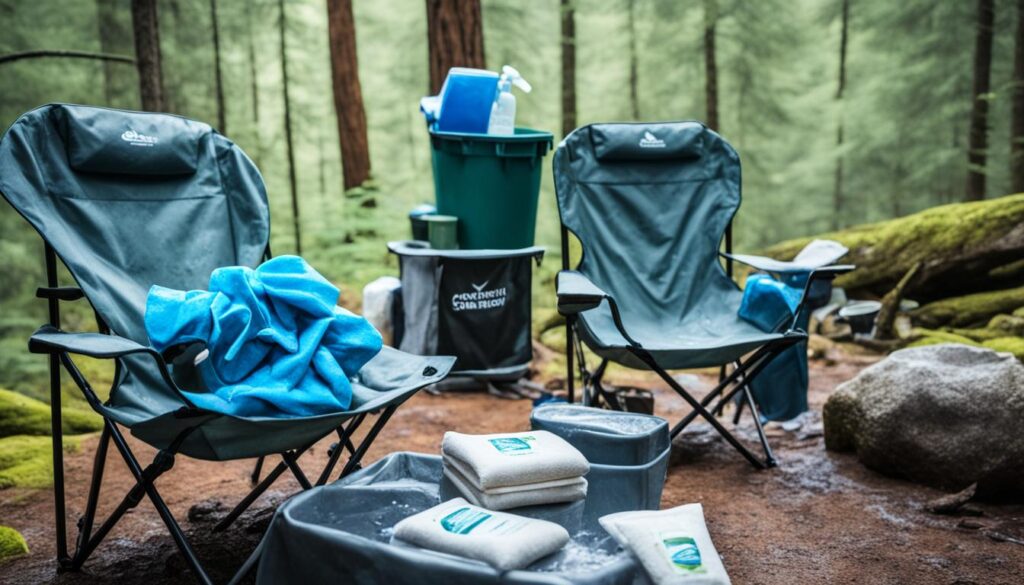Have you ever wondered how many square feet are packed into a 32 ft camper? It’s a common question among RV enthusiasts, and the answer may not be as straightforward as you think. In this comprehensive guide, I will take you through the process of calculating the square footage of a 32 ft camper, step by step. Get ready to discover the secrets of camper square footage and unlock the true dimensions of your RV!
Key Takeaways:
- Calculating the square footage of a camper involves multiplying the length and width of the vehicle.
- Additional features like slide-outs, awnings, and storage areas need to be measured separately and added to the total square footage.
- Consider factors such as the number of people traveling, storage space requirements, and the pros and cons of larger campers before determining the size that suits your needs.
- RVs come in various sizes, with travel trailers ranging from 12 to 40 feet, class A motorhomes being the largest, and class B motorhomes being the smallest.
- Measuring the length of an RV is important for determining if it will fit in a campsite or storage space, but discrepancies between listed length and interior living space can exist.
Contents
Factors to Consider When Determining Camper Size
When determining the size of a camper that suits your needs, there are several factors to consider. These factors include the number of people who will be traveling in the camper, the frequency of travel, and the amount of storage space required.
Larger campers have advantages such as more living space and the ability to dry camp for longer periods without hookups. This means you can enjoy a more comfortable and spacious living area, making your camping experience more enjoyable. Additionally, larger campers often offer more storage space, allowing you to bring along all the necessary gear and equipment for your outdoor adventures.
However, it’s essential to keep in mind the drawbacks that come with larger campers. One of the main considerations is the increased energy requirements. Larger campers typically require more power to operate appliances, heating, and cooling systems, which can lead to higher energy consumption.
Parking challenges are another factor to consider when choosing a larger camper. Larger campers may be more difficult to maneuver and park in tight spaces, such as crowded campgrounds or urban areas. It’s important to ensure you have adequate space to park and maneuver your camper comfortably.
Maintenance costs are also a consideration when it comes to larger campers. Bigger campers often require more maintenance and upkeep due to their size and complexity. This includes regular service, repairs, and potential upgrades.
Before deciding on the size of your camper, carefully weigh the pros and cons. Consider your specific needs, preferences, and budget. It may be helpful to visit a dealership or attend an RV show to see different camper sizes in person and get a better sense of what will work best for you.

Note: The image above showcases different camper sizes and can help you visualize the square footage of different campers.
Square Footage of Campers and RVs
When it comes to determining the square footage of a camper or RV, the calculation is straightforward. Simply multiply the length of the vehicle by the width. For most campers, the width is approximately 8 feet, making the square footage calculation an easy task.
However, it’s important to note that the size of campers and RVs can vary greatly. Travel trailers, for example, can range from 12 to 40 feet in length. Class A motorhomes, on the other hand, are the largest and can span from 25 to 45 feet, offering the most spacious and luxurious features.
For those seeking a more compact option, class B motorhomes, also known as camper vans, are the smallest and typically offer less square footage compared to other classes. Finally, class C motorhomes strike a balance between size and amenities.
To give you a better idea of the varying square footage among different RV types, here’s a comparison:
| RV Type | Length Range | Square Footage |
|---|---|---|
| Travel Trailer | 12 – 40 feet | Varies |
| Class A Motorhome | 25 – 45 feet | Varies |
| Class B Motorhome (Camper Van) | Varies | Less square footage |
| Class C Motorhome | Varies | Varies |
As you can see, the largest RVs, the class A motorhomes, offer the most space and luxurious features. However, keep in mind that the square footage can differ depending on the specific model and floor plan.
Understanding the square footage of different camper and RV types is important when considering the amount of living space and amenities you need for your travels. It allows you to make an informed decision and find the perfect fit for your adventures.

The Importance of Measuring RV Length
When it comes to owning an RV, understanding the measurements is crucial for various reasons. One of the key measurements to consider is the length of the RV. Measuring the length accurately allows you to determine if the RV will fit in a campsite or storage space and provides valuable insights into the interior living space. However, it’s essential to be aware of potential discrepancies between the listed length and the actual interior measurements.
RV manufacturers typically provide the length specification, which includes the distance from the front wall to the back wall, including the hitch. This overall length measurement gives you a general idea of the RV’s physical size. However, keep in mind that this listed length may not always precisely reflect the interior living space available to you. Understanding this difference is vital to ensure that the RV meets your specific needs and preferences.
Measuring the RV yourself is highly recommended to obtain an accurate understanding of its length and available living space. Grab a tape measure and start from the front of the RV, measuring all the way to the back, including the hitch if applicable. By doing so, you can compare your measurements with the manufacturer’s specifications to determine any discrepancies that may exist.
Accurate Measurements for an Informed Decision
Obtaining accurate RV length measurements empowers you to make an informed decision when purchasing or renting an RV. It ensures that the RV you choose will fit within your desired campsite or storage space, eliminating the risk of any unpleasant surprises. Additionally, by understanding the differences between the listed length and the actual interior space, you can assess the RV’s layout and determine if it provides the comfortable living area you desire.
With accurate measurements in hand, you can confidently compare different RV models and floorplans. This enables you to prioritize your preferences, such as interior space, slide-outs, or storage options when making your selection. By measuring the RV length yourself, you take control of your decision-making process and can avoid potential frustrations that may arise from relying solely on listed measurements.
Ultimately, the importance of measuring RV length lies in ensuring that you choose an RV that meets your expectations, both in terms of physical size and available interior living space. Taking the time to obtain accurate measurements allows you to make an informed decision and embark on your RV adventures with confidence.
| RV Length Measurements | Interior Living Space | Comparison |
|---|---|---|
| Manufacturer’s Listed Length | May include the hitch and exterior features | Potential discrepancies between listed length and interior living space |
| Measured Length by Owner | Accurately reflects the RV’s physical size | Enables informed decision-making and comparison |
RV Length Discussions and Tips
When it comes to measuring the length of an RV, there are often lively discussions and differing opinions in online forums and discussions. Some argue that the listed length refers specifically to the interior living space, while others believe it includes the hitch. These discussions highlight the importance of considering different perspectives and weighing them against your specific needs.
To measure RV length accurately, I recommend using a tape measure. Start from the front of the unit and measure all the way to the back, including the hitch if applicable. By taking these accurate measurements, you can gain a better understanding of the RV’s size and ensure compatibility with various campsites and storage spaces.
Knowing the exact measurements of your RV is crucial in making informed decisions when it comes to choosing the right campsite or storage space. By understanding the length of your RV, you can avoid any surprises or disappointments that may arise from inaccurate measurements provided in specifications or online listings.
FAQ
How do I calculate the square footage of a 32 ft camper?
To calculate the square footage of a 32 ft camper, you will need to measure the length and width of the vehicle in feet and multiply those numbers together.
What factors should I consider when determining the size of a camper?
When deciding on the size of a camper, consider factors such as the number of people traveling, frequency of travel, and required storage space. Pros and cons of larger campers include more living space but also increased energy requirements, parking challenges, and higher maintenance costs.
What is the square footage of different types of campers and RVs?
The square footage of campers and RVs can vary greatly. Travel trailers typically range from 12 to 40 feet in length. Class A motorhomes, the largest, can range from 25 to 45 feet, offering the most space. Class B motorhomes, also known as camper vans, are the smallest and offer less square footage. Class C motorhomes fall in between, offering a good balance of size and amenities.
How important is it to measure the length of an RV?
Measuring the length of an RV is important for determining if it will fit in a campsite or storage space and understanding the interior living space. It is recommended to measure the RV yourself to ensure an accurate understanding of the length and available living space.
Are there discussions about RV length and how to measure it accurately?
Yes, in online forums and discussions, there are often debates and varying opinions on measuring RV length accurately. To measure RV length correctly, use a tape measure and measure from the front of the unit to the back, including the hitch if applicable.






